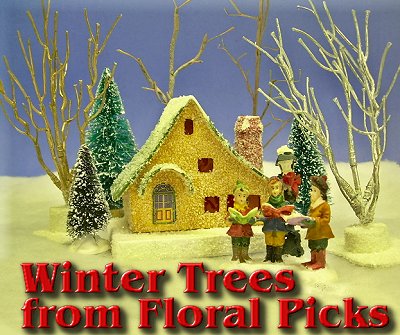
|
Note from Editor: Glitterhouse designer/builder Howard Lamey uses floral picks to make bare-looking trees for his villages of vintage-style cardboard structures. This is how he explained it to me.
Winter Trees from Floral Picks
Here's an easy way to use winter trees to add another layer of texture and color to your Christmas village or putz (cardboard house village). And they only cost about fifty cents each to make.
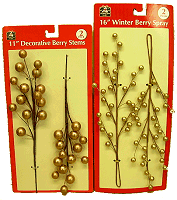 Preparing the Picks Preparing the Picks
I use artificial flower "picks" from a craft store or dollar store. Look for picks that would have a believable branch structure when the flowers are removed. The “craft store” picks I used were on sale for 50-cents each and the “dollar store” picks were two on a card for $1.
On many picks, there are barbs on each branch tip to hold on the petals, leaves, or other trim. Pull off the petals, leaves or other trim. If the branch tips come off, too, put them back on after you've separated them from their foilage. In the picks shown at the right, it was easiest just to clip off the round balls.
On most picks, you'll also need to clip off the barbs on the branch tips. (Note: When making a "flower pick" tree for a Halloween setting, Harold leaves the barbs on. Click here to see an example of a project that included such a tree.)
 Caution! The tips of the branches will be sharp, so be careful. Remember, these are decorations, not toys for children. Caution! The tips of the branches will be sharp, so be careful. Remember, these are decorations, not toys for children.
Trim the excess off the bottom end of the picks to make them shorter.
Preparing the Base
Cut a piece of stiff cardboard into an oval, triangle, circle or square. Mine were cut into a free-form design with gentle curves and no sharp points.
|
Cut 3/4-inch long sections from a 3/4 to 1-inch diameter wooden dowel or broom handle.
White glue the dowel section to the cardboard base and staple from the back. | 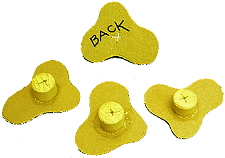 |
|
Drill a hole in the dowel to fit the diameter of the floral pick. Fill the hole with white glue, insert the floral pick and let dry. |
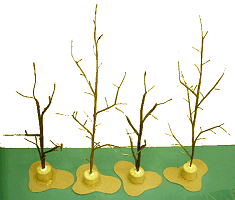
|
Finishing
Prime the base with flat white wall paint. You may need 2 coats since the cardboard and end grain of the dowel will soak up much of the first coat.
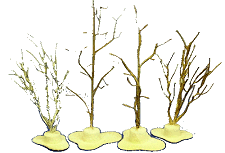 When the primer is dry, spray paint the trunk and branches with a “mist” of white, tan, gray, light blue, silver or gold. You can even spray them a solid color to fit in with your color scheme. Cover the white base with a rag while you spray the trunk and branches. When the primer is dry, spray paint the trunk and branches with a “mist” of white, tan, gray, light blue, silver or gold. You can even spray them a solid color to fit in with your color scheme. Cover the white base with a rag while you spray the trunk and branches.
Coat the cardboard and wooden dowel base with white glue and sprinkle on the clear glitter.
Conclusion
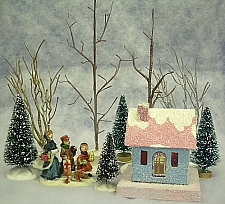 Remember, these still have pointy wire tips, so don't let small children play with them. But you can play with them all you want. In the photo to the right, Howard has posed them behind a different house. Remember, these still have pointy wire tips, so don't let small children play with them. But you can play with them all you want. In the photo to the right, Howard has posed them behind a different house.
How the base is finished depends on what the rest of the house looks like. If the house is set in a season other than winter, you may want to paint the base with a different colored topcoat before you attach the house and accessories.
For another article on making trees for indoor trains and towns, check out our Easy Homemade Trees article.
Other Articles about Glitterhouse include:
Other Putz House Resources:
Other Articles that Discuss Putzes and Christmas Villages of the mid-20th Century:
- About Nativities - Describes how German-American Nativity displays (the original "putzes") grew into communities and landscapes that included pastboard, glittered houses and even electric trains.
- What Do Trains Have to Do With Christmas - Describes how electric trains contributed to the communities many families set up at Christmas, with some details about the elaborate "Christmas Gardens" of the Baltimore/DC area.
- Author Antoinette Stockenberg's home page - includes photographs and comments on putz houses and life in general.
To Return to the BIG Indoor Trains(tm) Primer Page, click here.
|

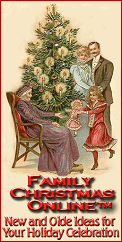
|

